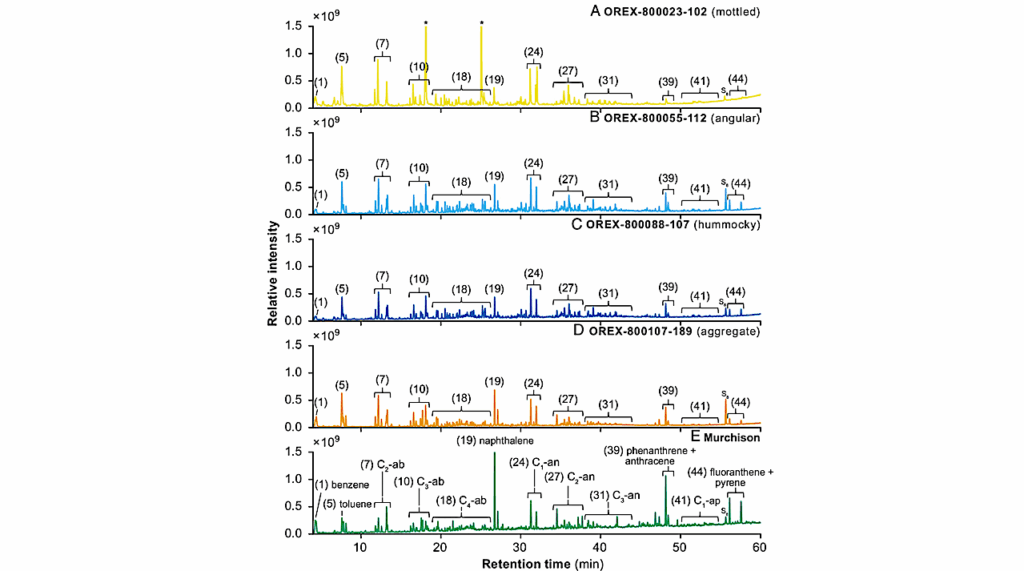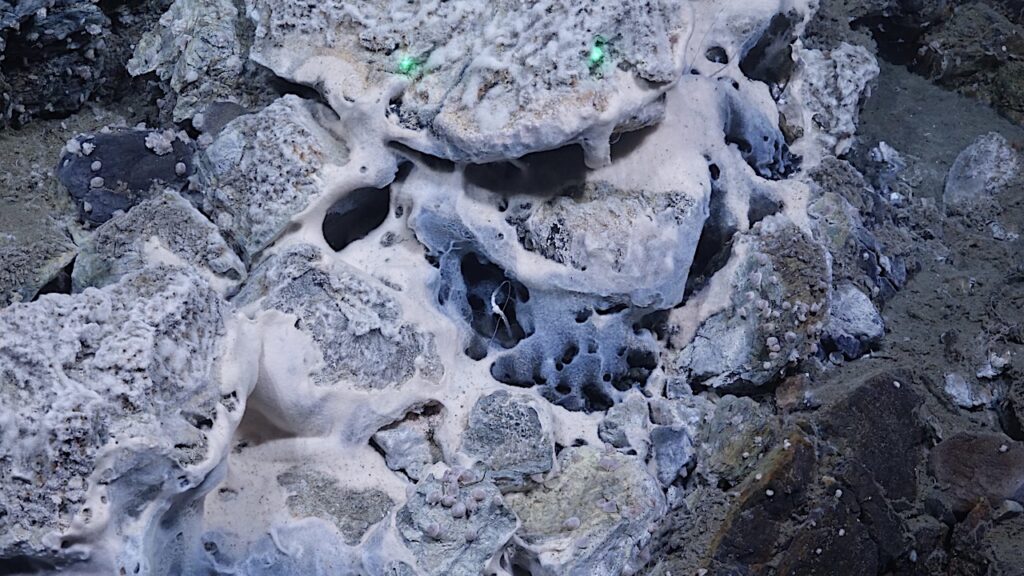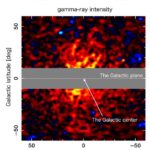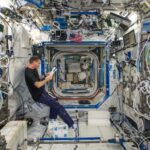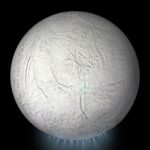Now Reading: Assessment Of Methods For Evaluating Structural Stability Of Cell Envelope Fragments In Hypersaline Brines As Biosignatures Of Ancient Microbial Life
-
01
Assessment Of Methods For Evaluating Structural Stability Of Cell Envelope Fragments In Hypersaline Brines As Biosignatures Of Ancient Microbial Life
Assessment Of Methods For Evaluating Structural Stability Of Cell Envelope Fragments In Hypersaline Brines As Biosignatures Of Ancient Microbial Life
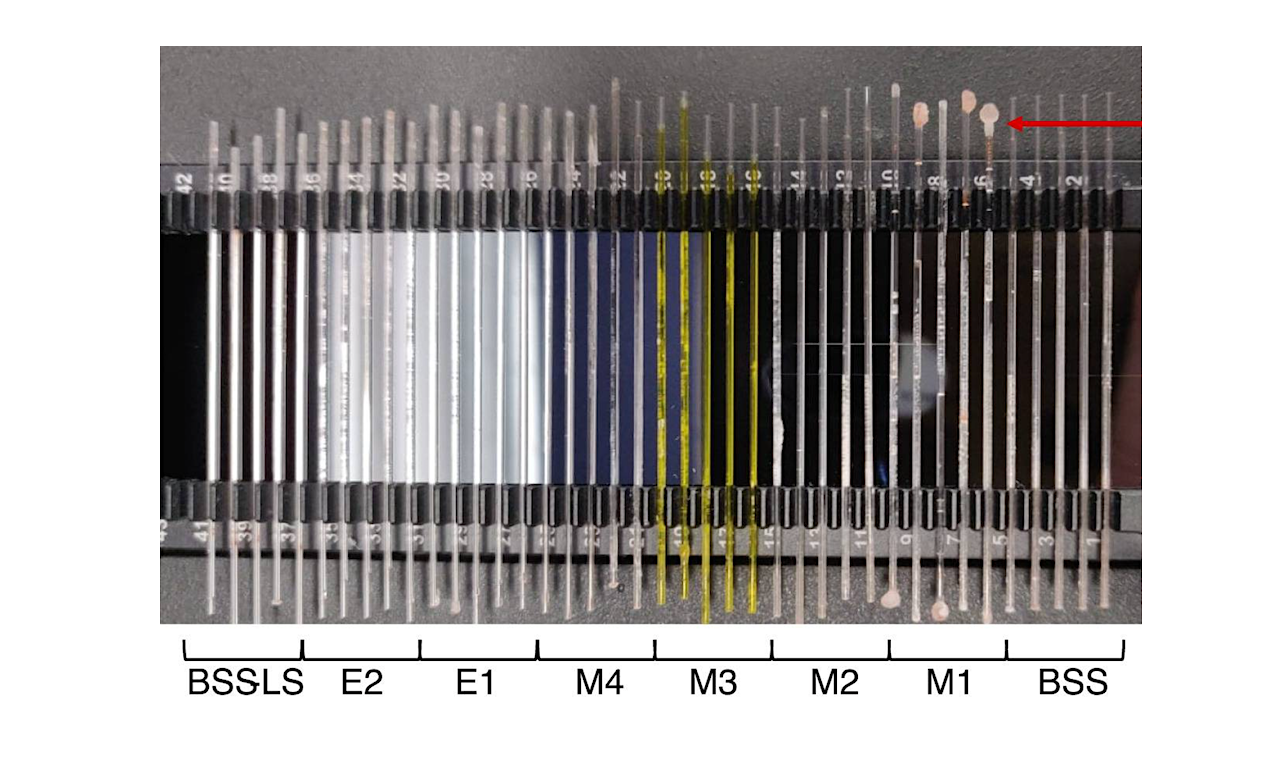

Nano-DSF glass capillaries filled with different brines. Crystallisation processes can be observed at the extremities of the capillaries. The red arrow indicates extensive crystallisation at the extremity of the capillaries containing the M1 brine. However, crystallisation was not limited to the M1 brine but to all of them. It could be observed both at the extremities and within the capillaries. — Science Reports via PubMed
The study of biomolecular stability of proteins and lipids in extreme saline environments is critical for understanding the preservation of potential microbial biosignatures of ancient life on Earth and other planetary bodies, including Mars.
In this study, we evaluate the compatibility of several analytical techniques, Nano-Differential Scanning Fluorometry (NanoDSF), Analytical Ultracentrifugation (AUC), and Differential Scanning Calorimetry (DSC) with hypersaline brine analogues of Early Earth and Early Mars conditions.
Using the halophilic archaeon Halobacterium salinarum as a model, we examine the structural stability of proteins within cell envelope fragments from dead cells, focusing on their preservation potential in complex brines.
The results reveal significant technical challenges in studying macromolecules in high-salinity environments, including crystallisation during DSC and NanoDSF, viscosity-related artifacts in AUC, and reduced fluorescence signals in NanoDSF due to the low tryptophan content of membrane proteins from halophilic archaea.
Nevertheless, NanoDSF proved useful for analysing multi-protein systems and DSC may be applicable using new generation technology, while AUC showed limited applicability under extreme saline conditions.
These findings provide crucial insights into the methodologies for studying the stability of halophilic biomolecules in brine environments and the limitations of current techniques in extreme settings.
Assessment Of Methods For Evaluating Structural Stability Of Cell Envelope Fragments In Hypersaline Brines As Biosignatures Of Ancient Microbial Life, Science Reports via PubMed
Astrobiology,
Stay Informed With the Latest & Most Important News
Previous Post
Next Post
-
 012024 in Review: Highlights from NASA in Silicon Valley
012024 in Review: Highlights from NASA in Silicon Valley -
 02Panasonic Leica Summilux DG 15mm f/1.7 ASPH review
02Panasonic Leica Summilux DG 15mm f/1.7 ASPH review -
 03How New NASA, India Earth Satellite NISAR Will See Earth
03How New NASA, India Earth Satellite NISAR Will See Earth -
 04And Thus Begins A New Year For Life On Earth
04And Thus Begins A New Year For Life On Earth -
 05Astronomy Activation Ambassadors: A New Era
05Astronomy Activation Ambassadors: A New Era -
06SpaceX launch surge helps set new global launch record in 2024
-
 07Space Force plans new ‘Futures Command’ amid pressure to speed up modernization
07Space Force plans new ‘Futures Command’ amid pressure to speed up modernization













